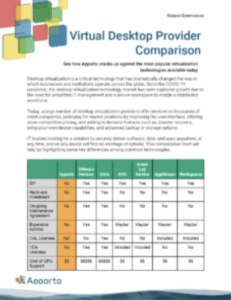Introduction:
In today’s cloud computing landscape, Azure and AWS are two major players offering a wide range of virtual machine (VM) options to meet various workload requirements. When it comes to selecting the right VM instance or optimizing disk input/output (I/O) performance, understanding the specifications and capabilities of each provider becomes crucial.
Workloads in the cloud can vary significantly, and different applications have distinct resource requirements. When considering virtual machine specifications and disk I/O options, it’s important to align them with the specific needs of your workload. For example, GPU-intensive tasks such as machine learning or video rendering may benefit from instances with high-performance GPUs like NVIDIA Tesla V100 or T4. On the other hand, workloads that demand fast storage access or require low latency might require premium SSDs with higher IOPS and throughput. Understanding your workload’s characteristics and performance demands is crucial in selecting the appropriate VM instance and disk type to ensure optimal performance and cost efficiency.
In this blog post, we will compare the GPU options for instances with 4 vCPUs and 16 GB RAM, as well as the disk I/O specifications for virtual disks ranging from 250 GB to 1 TB in size. These specifications represent a good average across multiple workload profiles found in enterprise today. Cost comparisons are for Windows-based VMs running in the US-East region for both AWS and Azure, and are the straight hourly cost with no reservation or education discounts.
Virtual Machine Specifications:
Table: Comparison of GPU options for instances with 4 vCPUs and 16 GB RAM
Provider | Instance Type | vCPUs | RAM | GPU | GPU Model(s) | GPU Memory | Cost per Month |
Azure | Standard_NC4 | 4 | 16 GB | NVIDIA Tesla | K80 | 12 GB | $513.80 |
Standard_NV4 | 4 | 16 GB | NVIDIA Tesla | V100 | 16 GB | $304.41 | |
AWS | g4dn.xlarge | 4 | 16 GB | NVIDIA Tesla | T4 | 16 GB | $513.80 |
g3s.xlarge | 4 | 16 GB | NVIDIA Tesla | M60 | 8 GB | $681.82 |
*This is not an exhaustive list. Readers should confirm specs and current pricing from published documentation by Microsoft and Amazon.
Disk I/O Specifications:
Table: Comparison of disk I/O specifications for virtual disks
Provider | Disk Size | Disk Type | Maximum IOPS | Maximum Throughput | Cost per Month |
Azure | 250 GB | Standard HDD | Up to 500 | Up to 60 MB/s | $11.33 |
Standard SSD | Up to 500 | Up to 60 MB/s | $19.20 | ||
Premium SSD | Up to 7,500 | Up to 250 MB/s | $38.02 | ||
AWS | 250 GB | Magnetic | Up to 100 | Up to 40 MB/s | $11.25 |
General Purpose SSD | Up to 3,000 | Up to 125 MB/s | $25.00 | ||
Provisioned IOPS SSD | Up to 32,000 | Up to 250 MB/s | $226.25 | ||
Azure | 500 GB | Standard HDD | Up to 500 | Up to 60 MB/s | $21.76 |
Standard SSD | Up to 500 | Up to 60 MB/s | $38.40 | ||
Premium SSD | Up to 7,500 | Up to 250 MB/s | $73.22 | ||
AWS | 500 GB | Magnetic | Up to 100 | Up to 40 MB/s | $22.50 |
General Purpose SSD | Up to 3,000 | Up to 125 MB/s | $50.00 | ||
Provisioned IOPS SSD | Up to 32,000 | Up to 250 MB/s | $257.50 | ||
Azure | 1 TB | Standard HDD | Up to 500 | Up to 60 MB/s | $40.96 |
Standard SSD | Up to 500 | Up to 60 MB/s | $76.80 | ||
Premium SSD | Up to 7,500 | Up to 250 MB/s | $135.17 | ||
AWS | 1 TB | Magnetic | Up to 160 | Up to 40 MB/s | $46.08 |
General Purpose SSD | Up to 3,000 | Up to 125 MB/s | $100.00 | ||
Provisioned IOPS SSD | Up to 32,000 | Up to 250 MB/s | $323.00 |
*This is not an exhaustive list. Readers should confirm specs and current pricing from published documentation by Microsoft and Amazon.
*This is not an exhaustive list. Readers should confirm specs and current pricing from published documentation by Microsoft and Amazon.
Virtual Desktop Provider Comparison
The Apporto Approach:
As you can see, building out the right virtual desktop configuration takes quite a bit of research, understanding, and time, and making the incorrect choices can be very costly.
Apporto is a fully managed, turnkey desktop-as-a-service (DaaS) platform with a 100% ‘Would Recommend’ rating by Gartner verified peer reviews. The solution offers cloud-based virtual desktops that enables users to access their applications and files from any device with an internet connection and a modern browser. A key benefit of Apporto is that it eliminates the need for customers to design, build, and manage a complex cloud architecture of their own.
Users will enjoy a best-in-class user experience for both performance and ease of use, ensuring anywhere access and increased productivity. Apporto offers a range of pricing plans, including options for educational institutions, businesses, and individuals. It is also easy to set up and use, with no special technical skills required.
Conclusion:
Choosing the right VM instance and understanding disk I/O capabilities are essential for achieving optimal performance in the cloud. In this comparison, we examined the GPU options for instances with 4 vCPUs and 16 GB RAM, as well as the disk I/O specifications for virtual disks of various sizes in Azure and AWS.
We hope this comparison has been helpful in understanding the VM and disk options available in Azure and AWS, and the complexity around the do-it-yourself (DIY) approach to deploying cloud desktops for your users. If you have any questions or need further assistance, feel free to reach out.
Happy Computing!



